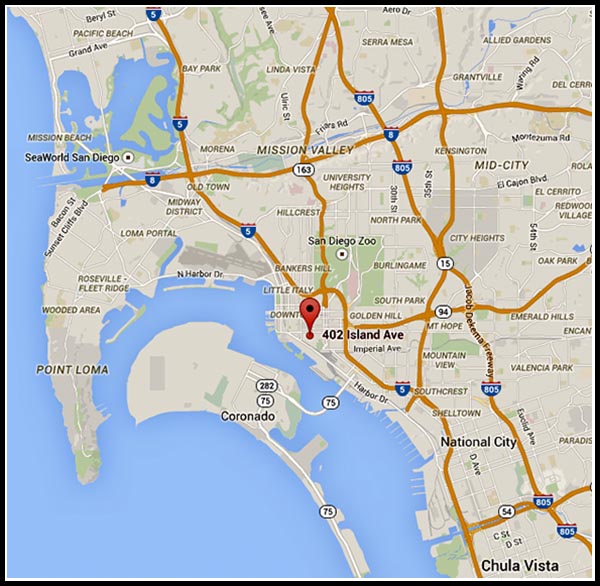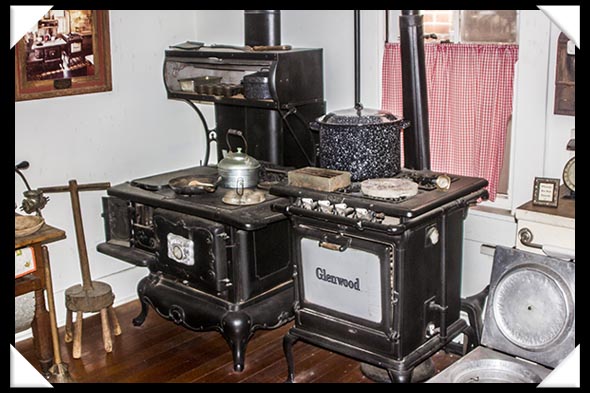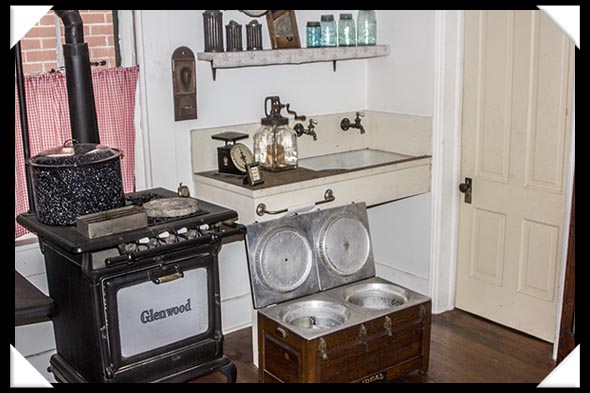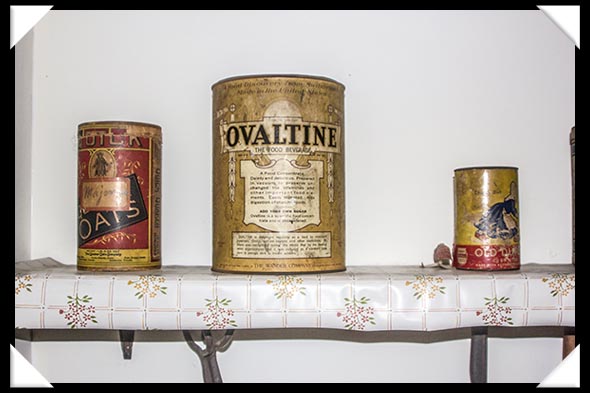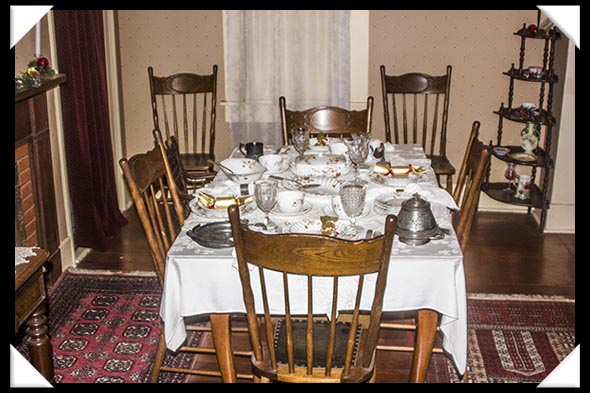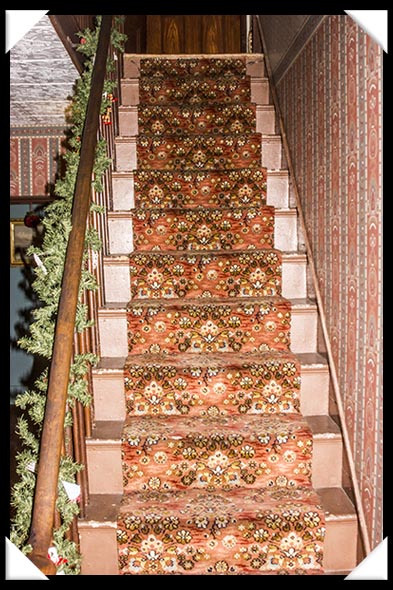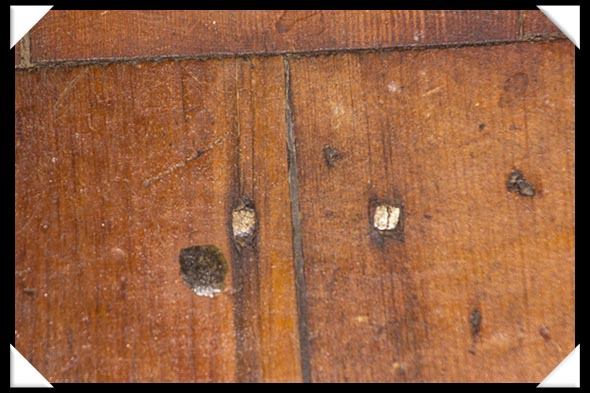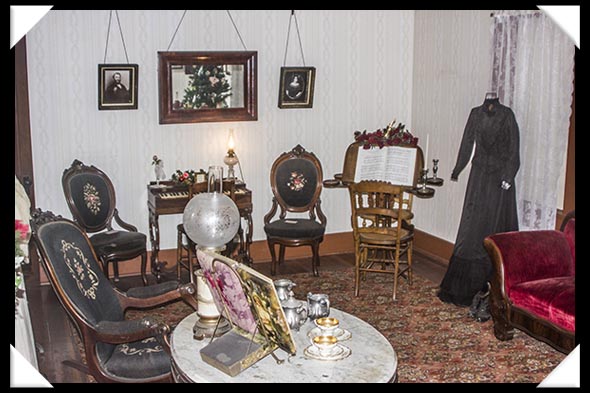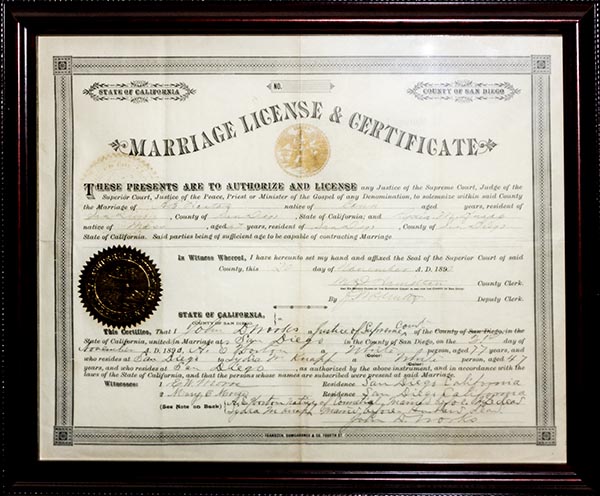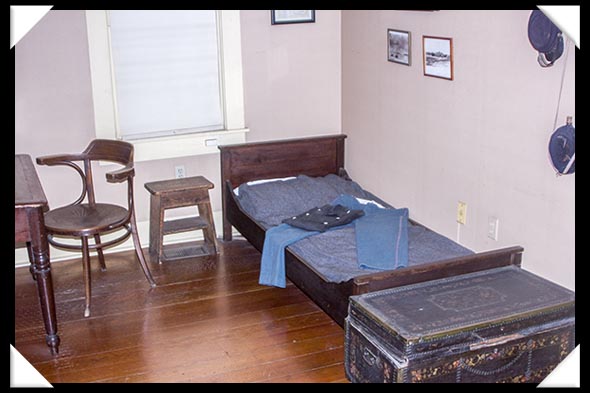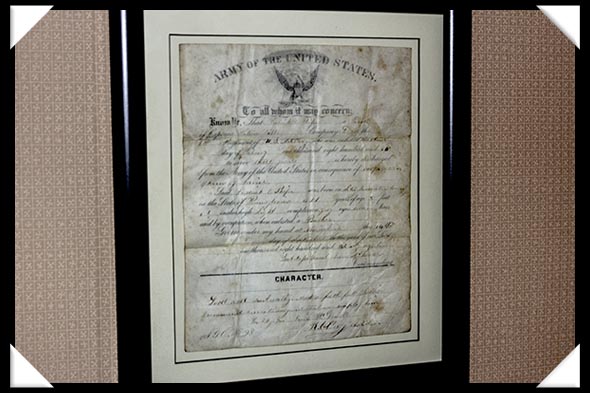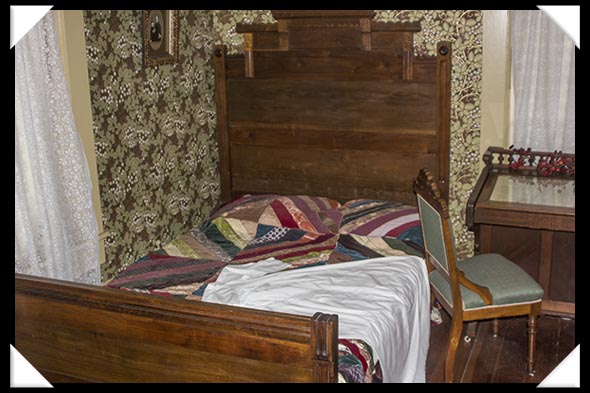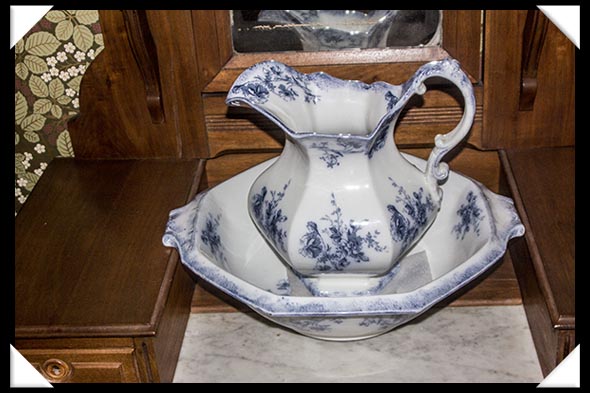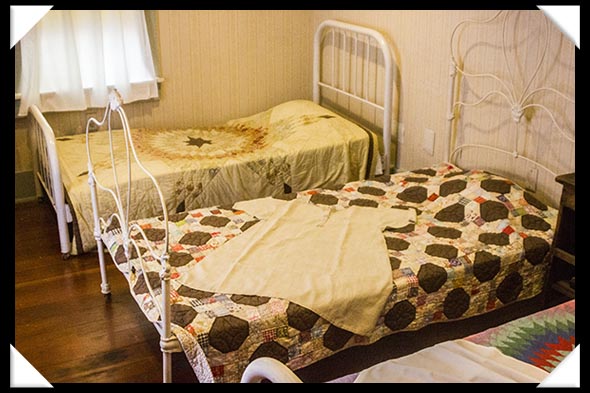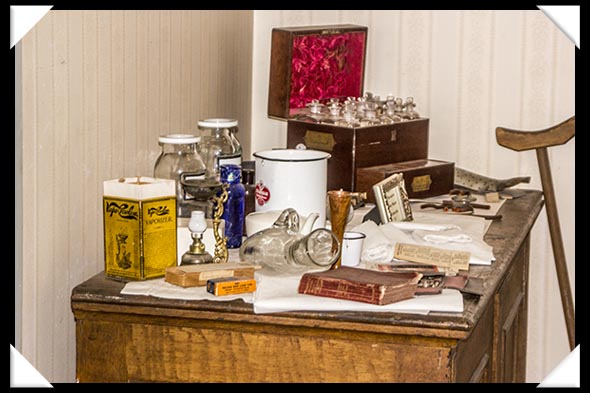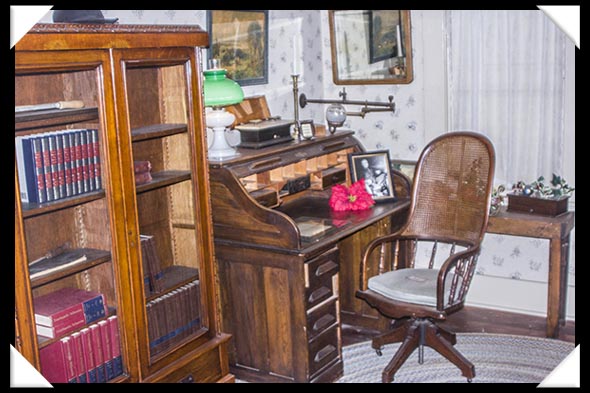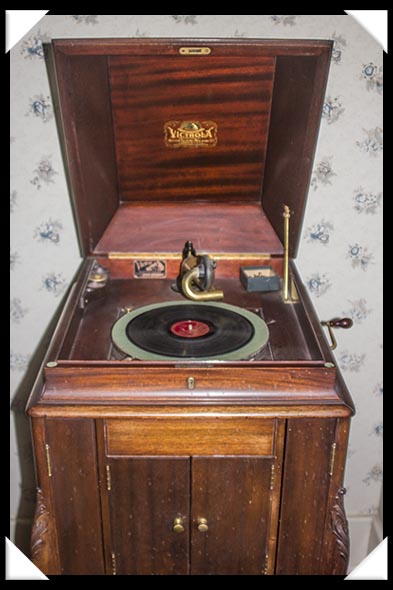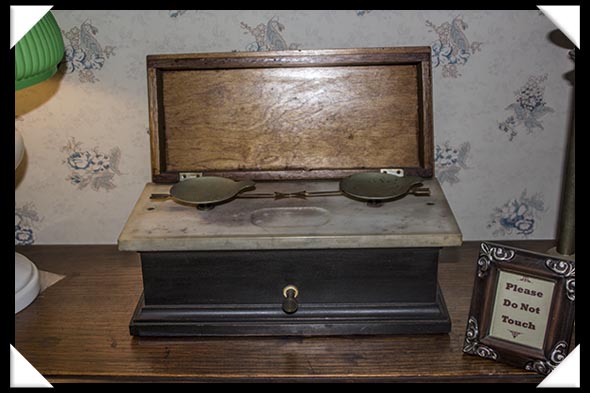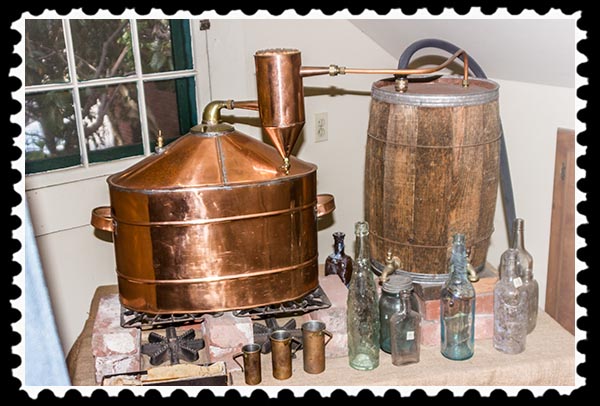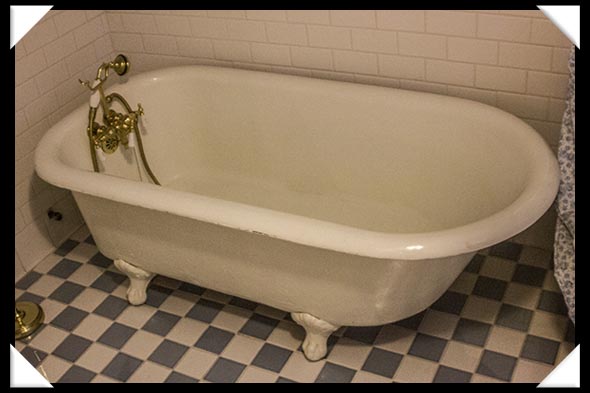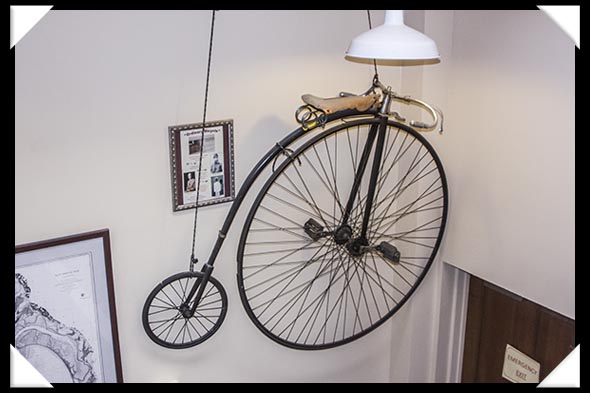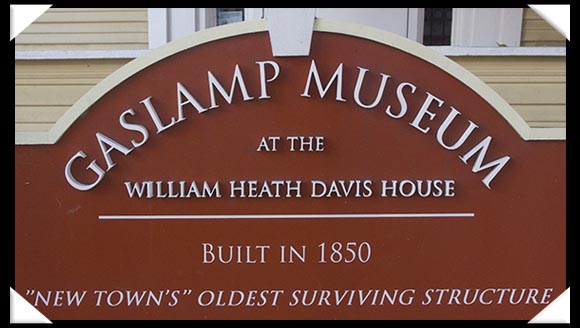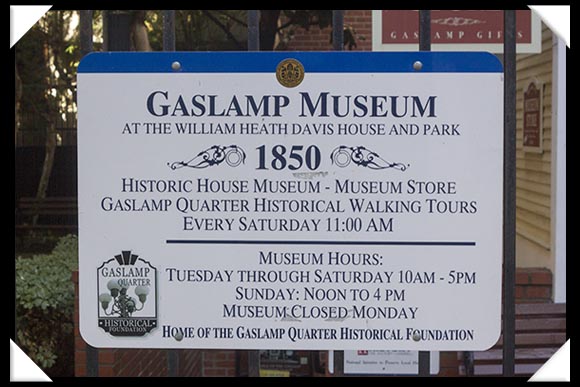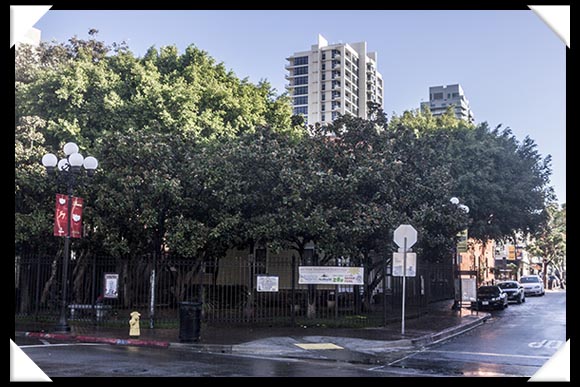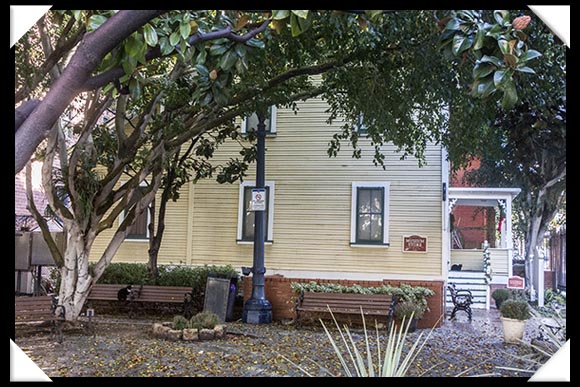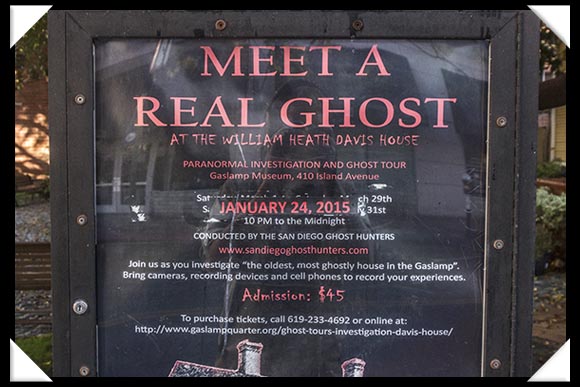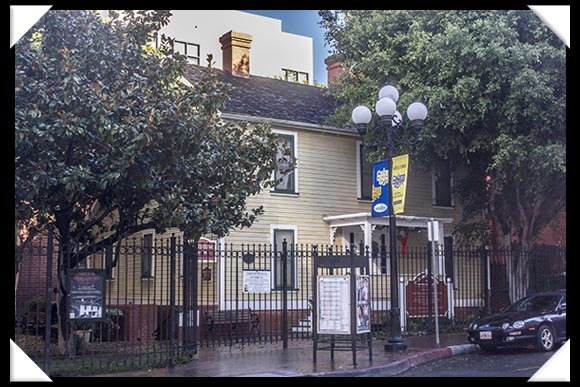For previous posts on the Davis-Horton House, see
The Davis-Horton House, part 3
The Davis-Horton House, part 2
The Davis-Horton House.
![]()
The Davis-Horton House, built in 1850, is the oldest house in San Diego’s historic Gaslamp Quarter. It’s also one of the oldest structures in all of San Diego.
Since the lumber resources in San Diego in 1850 were nonexistent, the house was purchased as a “pre-cut” house from a manufacturer in Portland, Maine, and shipped to San Diego around the Cape Horn of Africa. The “salt-box” style of the house was prevalent in New England at the time.
Many sources say that the house was purchased by the City of San Diego in the early 1970s, but for some reason we can’t get an exact year. The brochure from the Gaslamp Museum says that the house was sold in 1981 and donated to the City of San Diego.
The house was originally built at State & Market Streets. In 1873, when Anna Scheper bought the house, she had it moved to 11th & K Streets where it would be used as a hospital, eventually becoming known as the County Hospital. It was moved to its current location at 410 Island Avenue in 1984.
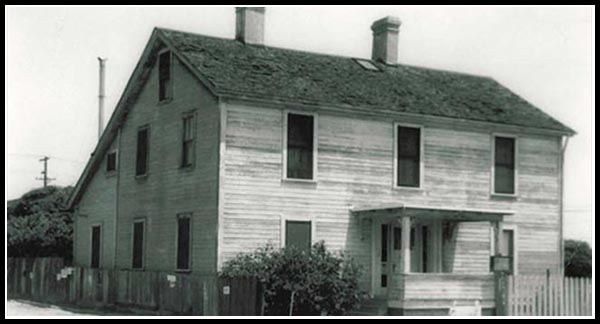 Picture ca. 1873 at the 11th Street & K Street location
Picture ca. 1873 at the 11th Street & K Street location
![]()
From 1867 to 1873, Alonzo Horton, one of San Diego’s early real estate developers, lived in the house, buying a 50% interest in the house in 1872. The house is the only remaining house where Alonzo Horton is known to have lived.
Sometime in the 1890s, the house was bought by Henry and Lina Lohmann, German immigrants. In 1901, they adopted a 6-year-old boy named George Deyo, and in 1936, they gave the house to George.
George Deyo took in a young boy named Edward Lanuza, as well as the boy’s grandmother. After Edward married, he raised his family in the home, living without electricity in order to preserve the house for history. How awesome. Someone actually thinking about history and how to save something for future generations.
Edward inherited the house when George Deyo died in 1977. After the house was sold 1981, the new owners donated it to the City of San Diego, although some sources say that the City of San Diego bought it.
Each room in the house represents a different time in the house’s history, including as a pre-Civil War military officers’ barracks and a hospital.
Now known as the Gaslamp Museum, it is open Tuesday through Saturday, 10:00 AM to 4:30 PM, and Sunday from noon to 3:30 PM.
I went on a Saturday and took lots of pictures…. but you knew that….
The kitchen exhibits objects covering a wide range of time in the history of the house, including a coal-burning stove and a gas stove, both in use until 1981.
![]()
The dining room is set for a family meal ca. 1885 with pressed glass goblets, spooners, and knife rests.
![]()
The staircases are original to the house, as is hardwood flooring throughout, best visible in the hallways. Look closely and you can see wooden, square-headed nails in the floor planks.
![]()
The parlor represents the period from 1867-1873 when Alonzo Horton lived in the house. Hanging on the wall is the marriage certificate for Alonzo and Lydia. I thought it interesting that the marriage certificate indicates that Alonzo was 77 and Lydia was 47. I thought marriages between people of such a wide age difference was a fairly modern thing, post-World War II. Wonder what the gossip was like….
![]()
The first residents of the Davis-Horton House were military officers. Two of the military officers known to have lived there became generals: John Bankhead MacGruder, who fought for the South during the Civil War, and Nathanial Lyon, who fought for the North.
The military room represents a military bedroom from the 1870s. Included in the room is an 1870s military uniform and U.S. Army honorable discharge papers for Private Pfeiffer dated 1866. Unfortunately, no one knows who Private Pfeiffer was or why his discharge papers were stored in the house and found in the possessions of Henry Lohmann and George Deyo.
I found it interesting that the discharge says that Private Pfeiffer actually is “Frederick E. Phifer” from Pennsylvania and was a “Bucher” when he enlisted in the Army. I can’t believe no one has found out more information about him.
![]()
The children’s room includes toys from the nineteenth century, including antique marbles and wooden checkers representing toys that children would have played with in those days. Sadly, I didn’t see an iPad, a DVD player, an MP3 player, or an XBox. Poor children from a century ago………..
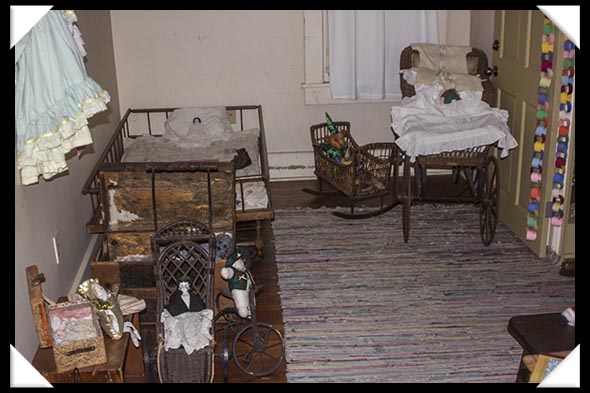
![]()
Alonzo Horton’s Bedroom—Although it is not known which room Horton actually used as his bedroom, he is the only resident of the house who could have afforded the luxurious stone fireplace. The room has several of his belongings, including a beautiful pitcher and basin.
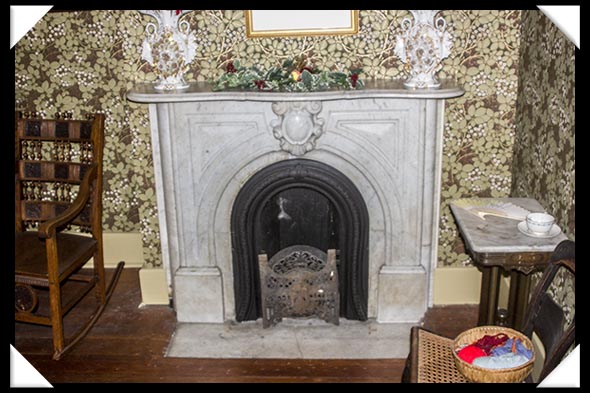
![]()
The hospital room represents the period from 1873 to the early 1890s when the house served as the County Hospital. The owner, Anna Scheper, not only lived in the house but cared for up to 19 patients at one time in the house.
![]()
The Lohmann-Deyo study represents the period when George Deyo lived in the house. Artifacts in the room, all belonging to the Deyo and Lohmann families, include the desk, a Victrola, and a pharmaceutical scale for weighing gold. When the room was renovated as part of the museum, a cutaway wall was discovered which led to an alcove where a working whiskey still was found, as well as $5,000 in gold.
![]()
The Victorian bathroom includes a claw-footed bathtub which is original to the house and in use until 1981. The pull-chain toilet is a replica of the original.
![]()
Notice the walls and floors. In the 1860s, hygiene awareness increased due to Prince Albert, Queen Victoria’s husband, becoming ill and dying of typhus. Bathrooms included glazed tiles on floors and walls, enameled sinks and bathtubs, and exposed pipes for easy cleaning.
In the stairway leading up from the basement to the interior of the house hangs an “ordinary bicycle” from the 1880s.
![]()
I think I prefer my unordinary bicycle from the 2010s:
![]()
For the introductory blog post
to San Diego’s historical landmarks,
click on San Diego’s Historical Landmarks.
For previous posts in the
San Diego Historical Landmarks series,
go here.
![]()
Need a unique gift?
Anniversary? Birthday? Graduation? Marriage?
Choose Photographic Art by Russel Ray Photos at Fine Art America.
![]()


